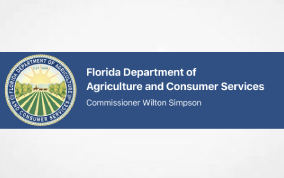Published Via The Mondaq Platform
The long-awaited decision comes nearly 60 years after cannabis was first included in the strictest category of the 1961 United Nations Single Convention on Narcotic Drugs (hereinafter also referred to as “Convention”).
Through this historical vote the drugs in Schedule IV of the Convention concerning dangerous substances with high potential toxicity and low, or even no therapeutic power – a subset of those already in Schedule I – no longer include cannabis.
It is worth to briefly clarify that Article 1 (j) of the aforementioned Convention provides that the term psychotropic drug means any of the substances included in Schedules I and II, whether natural or synthetic.
Cannabis and cannabis-related substances 1 have for many years been included in the Schedules of the Convention (as amended by the 1972 Protocol): cannabis and cannabis resin in the Schedule I and IV; extracts and tinctures of cannabis in the Schedule I.
As said, the substances on both lists were categorized as addictive substances with side effects and low or even no therapeutic effects. Thus, until this historical vote, cannabis and cannabis resin were included, along with opioids, cocaine and numerous synthetic substances.
As a matter of fact, the schedules had been conceived and arranged in order to classify drugs according to their medical usefulness versus the possible harm they might cause to human health.
Therefore, any unauthorised sale, including any unauthorised sale of “cannabis flower” and “extracts and tinctures of cannabis” were meant to be subject to criminal penalties.
The purpose of the international Convention, designed to control psychotropic drugs, has been also reflected in the various legislation on this matter.
In Italy, for example, without prejudice to the most recent regulatory measures, medical cannabis, with level of THC even higher than 0.6% 2, is regulated by the Presidential Decree no. 309/1990 “Consolidation of the laws governing drugs and psychotropic substances, the prevention, treatment and rehabilitation of drug addicts”, which contains the rules concerning the criminal sanctions (arrest included) for drug dealing, illegal possession drugs and drug trafficking organizations.
The Law in question defines the following conducts as punishable, if not authorized in advance by the Ministry of Health: (i) cultivation, production, manufacture, extraction, refining; (ii) dealing, offering, sale, transferring, receiving, obtain for others, distributing, trading, (iii) carrying, sending, transit, dispatching in transit, delivering and possession; (iv) export and import of drugs.
Moreover, the Ministry of Health has to carry out the following functions: (i) selecting which areas can be cultivated for this purpose; (ii) importing, exporting and distributing the products throughout the country or authorizing their importation, exportation, distribution or their holding stock; (iii) establishing the amount of cannabis cultivation and production (depending on the requests made by Italian regions and the autonomous provinces, on the basis of the patients’ needs in a specific area), informing the International Narcotics Control Boards.
However, notwithstanding the above, especially in the last years, the great effects in medicine and therapeutic properties of cannabis have been confirmed.
Cannabis has great effect in patients with chronic pain (including neuropathic pain), in spasticity linked to neurological diseases, in the treatment of nausea and vomiting (particularly the one caused by chemotherapy), in anxiety management 3.
It has been also confirmed that only THC (Delta-9-tetrahydrocannabinol) has psychotropic effects, instead CBD (Cannabidiol) does not. CBD turned out to be incredibly useful for relieving spams muscle pain and to have also antipsychotic properties.
Therefore, on the basis of scientific evidence of cannabis beneficial effects, the WHO in 2019 first made recommendations to change cannabis classification.
The General Director of the World Health Organization sent a letter to the Secretary General of the United Nations recommending, among other things, that cannabis and associated substances should be rescheduled in the international drug control framework.
More in particular, the WHO Expert Committee on Drug Dependence (ECDD) came to the decision that CBD “does not appear to have abuse potential or cause harm” in November 2017 4.
The ECDD stated: “in humans, CBD exhibits no effects indicative of any abuse or dependence potential” and “to date, there is no evidence of public health related problems associated with the use of pure CBD”.
On 24 January 2019 the WHO Expert Committee on Drug Dependence (ECDD) recommended to:
- Remove cannabis and cannabis resin from Schedule IV (keep in Schedule I) as it is not “particularly harmful”;
- Remove “extracts and tinctures” from the Conventions as it is a complicated term to interpret, covering preparations that have psychoactive properties as well as those that do not pose a risk to public health;
- Delete Delta-9-THC/dronabinol from the 1971 Convention Schedule II and move to the 1961 Convention, Schedule I (with cannabis and cannabis resin), because it refers to the main psychoactive component of cannabis;
- Delete THC isomers from the 1971 Convention Schedule I and move to the 1961 Convention Schedule I;
- Add a footnote that products containing predominantly CBD and not more than 0.2% Delta-9-THC are not under international control. They are explicitly excluded, as there is no relevant risk to public health because marijuana for medical use is not a dangerous drug, i.e. a risky narcotic, such as heroin.
At this stage, only the first of the WHO recommendations was approved. This historical decision, however, can have a great impact worldwide.
The approval of WHO Recommendation – with a majority of 27 votes in favour, 1 abstention and 25 votes against – could lead, in fact, to a more flexible international (and not only) drug policy and to the removal of many barriers to the use of cannabis for medical and research purposes.
The UN vote could encourage countries to re-evaluate how cannabis is qualified on their list of narcotic drugs, potentially developing more research into medical cannabis and its use as a treatment for various ailments and conditions, standing that “(…) many countries look to global conventions for guidance, and United Nations recognition is a symbolic win for advocates of drug policy change who say that international law is out of date” 5.
Footnotes
1 According to the defintion provided by article 1(1) (b) and (c) of the Convention, the words “Cannabis” and “Cannabis plant” refer to “the flowering or fruitng tops of the cannabis plant (excluding the seeds and leaves when not accompanied by the tops) from which the resin has not been extracted, by whatever name they may be designated”, and as “any plant of the genus Cannabis”.
2 The percentage of THC in the Industrial Cannabis, instead, pursuant to Law no. 242/2016 can fluctuate from 0.2% to 0.6%.
3 Report of Professor Barnes “Cannabis: the evidence for Medical Use” (May 2016).
4 Report of 41st ECDD – Cannabis: Report Extract, section 5.5.
5 Isabella Kwai, ‘Huge Historic Victory’ for Cannabis, U.N. Classifies It as a Less Dangerous Drug, New York Times, Dec. 3rd, 2020, p. 13.
The content of this article is intended to provide a general guide to the subject matter. Specialist advice should be sought about your specific circumstances.

















